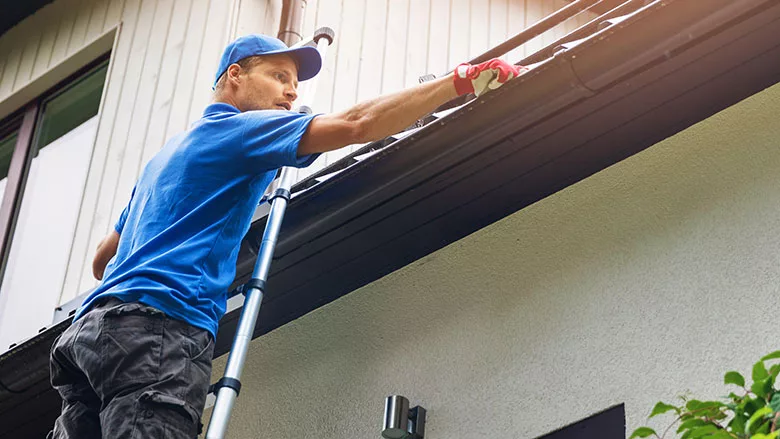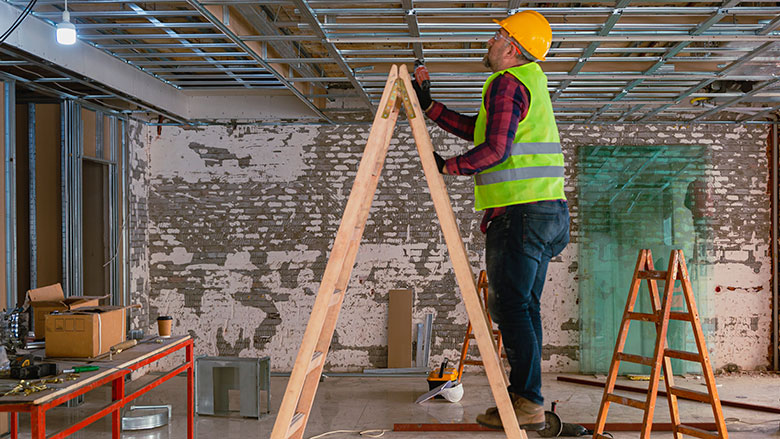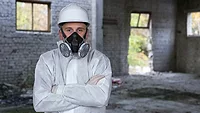Safe Stepladder Use in the Restoration Industry
Don’t Become Complacent With Stepladder Safety

Photos: Getty Images
Stepladders are very commonly used, and misused, in the restoration industry. They are virtually a necessity when it comes to some types of work, such as:
- Demolition
- Renovation and Rebuild
- Cleaning
In contrast, falls are the #1 cause of injuries and fatalities in Construction (the closest industry to restoration in the OSHA world). (1) Fortunately, we have easy options for training and newer ladder designs that are safer. In this article, I am going to cover the following topics:
- OSHA Expectations
- Safe and Unsafe Use
- Training
- Stepladders are Tools
I hope this information provides some insight for you and prevents injuries on your jobsites!

OSHA Expectations
OSHA’s Subpart X covers stairways and ladders. (2) For the purposes of this article, we are going to limit the scope to stepladder use. For this type of ladder use in the restoration industry, OSHA’s expectations are basically limited to safe use and training.
Safe Use
The following are a basic summary of OSHA’s safe use requirements: (3)
- Extend at least 3 feet above upper landing surfaces
- Maintain free of slipping hazards
- Do not load beyond their rated capacity
- Only use for their intended purpose
- Only used on stable, level surfaces or secured from slipping/moving
- Do not use the top step as step
- Use at least one hand to go up or come down the ladder
- Do not carry any object(s) that could cause loss of balance and a fall
Observed Unsafe Use
From my experience, the most common misuses I have observed are listed below. Certainly, there are infinite ways to work unsafely from a stepladder, but these are good points to start looking for on a jobsite with stepladders or even at your office/warehouse.
- Working from a closed stepladder leaned against a wall - danger of feet slipping out
- Standing on the top step (or even the second to top) – danger of falling
- Working from a stepladder with the spreader bars not fully open – danger of fall or ladder collapse
Training
OSHA 1926.1060 (4) states that employers shall train employees on:
- The fall hazards in the work area
- How to assemble, maintain, and disassemble fall protection systems
- Proper construction, use, placement, and care of stairways and ladders
- Maximum capacity of ladders in use
- The standards for stairways and ladders

Since this standard also applies to stairways, some of this doesn’t directly apply to our step ladders. Certainly, knowing hazards to ladder use, proper use and care, and maximum capacity would directly apply. I recommend training employees with stepladder documents like an OSHA Fact Sheet, an American Ladder Institute document, or a ladder manufacturer’s document. Please see the Resources Section to find some of those.
Ladders are a Tool
Anything used as commonly as a step ladder obviously has value to a restoration company and produces revenue. Much like any tool or other piece of equipment used routinely. Hence, I always say treat ladders like tools – valuable tools. How does one do that; here are some common-sense basics:
- Wipe them down and/or clean them after particularly dirty jobs
- Repair or replace them when damaged
- Buy the right tool for the job – correct height, correct weight rating, correct configuration
- Don’t leave them exposed to the elements
I’ll also add that there are ongoing stepladder developments that make them safer. Most notable is the addition of a small platform and rail to stepladders that allow a more stable platform to work from. You can also find multi-function ladders (they expand and contract) can function as a step ladder and have flared out lower sections that provide a wider base and enhanced stability. I could go on with examples, but suffice it to say that just like any common tool, there are newer models that provide safer operation than previous versions!
Summary
Stepladder safety is certainly a simple topic; however, the injury statistics point towards common misuse with equally common bad results. I believe restorers can easily addressed by treating stepladders as tools, insisting on safe use, and providing training to employees.
Resources
Occupational Safety and Health Administration, DOC FS-3662 05/2013, OSHA Fact Sheet, Reducing Falls in Construction: Safe Use of Stepladders. https://www.osha.gov/sites/default/files/publications/OSHA3662.pdf
American Ladder Institute, Ladder Safety Training, Step Ladder. https://www.americanladderinstitute.org/page/Stepladder
Little Giant Ladder Systems, Blogs, Best Tips for Stepladder Safety. https://www.littlegiantladders.com/blogs/blog/using-a-step-ladder-safely
References
- Occupational Safety and Health Administration, National Safety Stand-Down to Prevent Fall in Construction. https://www.osha.gov/stop-falls-stand-down#:~:text=Fatalities%20caused%20by%20falls%20from,Those%20deaths%20were%20preventable.
- Occupational Safety and Health Administration, Subpart X – Stairways and Ladders. https://www.ecfr.gov/current/title-29/subtitle-B/chapter-XVII/part-1926/subpart-X
- Occupational Safety and Health Administration, Subpart X – Stairways and Ladders, 1926.1053(b). https://www.osha.gov/laws-regs/regulations/standardnumber/1926/1926.1053
- Occupational Safety and Health Administration, Subpart X – Stairways and Ladders, 1926.1060. https://www.osha.gov/laws-regs/regulations/standardnumber/1926/1926.1060
Looking for a reprint of this article?
From high-res PDFs to custom plaques, order your copy today!









